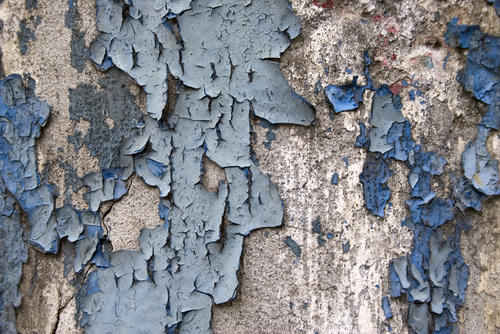 |
Contractors performing almost any work that disturbs paint in residences, apartments, schools, and daycare centers built before 1978 must comply with the Lead-Based Paint Renovation, Repair, and Painting (RRP) rule. Yesterday, we reviewed recent violations of this rule, and today we will look at some of the frequently asked questions about who and what are covered by the RRP rule.
Should Your Company be RRP-Certified for Lead-Based Paint?
Q: What are the defining aspects for contractors covered under the RRP rule?
A: Anyone performing work for which they are compensated that disturbs painted surfaces in residential houses, apartments, and child-occupied facilities (such as schools and daycare centers) built before 1978 are required to be in compliance with the RRP rule (except as defined below).
Q: Are there any exceptions to this definition?
A. Yes. The EPA has excluded the following housing and/or activities from coverage under the rule:
- Housing built in or after 1978.
- Housing for elderly or disabled persons, unless children under the age of 6 live there or are expected to live there.
- Zero-bedroom dwellings (such as studio apartments and dormitories where bedrooms are not separated from other living space).
- Housing or components that have been declared lead-free and certified by a qualified inspector or risk assessor. A certified renovator may declare specific components lead-free using an EPA- recognized test kit or by collecting paint chip samples and obtaining test results from an EPA-recognized laboratory showing the components do not contain lead-based paint.
- Minor repair and maintenance activities that disturb 6 square feet (sq ft) or less of paint per room indoors, or 20 sq ft or less on the building’s exterior surfaces. These minor activities do not include window replacement and projects involving demolition or prohibited practices.
- Painting that does not disturb painted surfaces such as by sanding, scraping, or other preparation activities.
Get everything you need to understand and increase awareness of environmental management practices at your company. Request 14-day free access to 20 environmental training courses from TrainingToday.
Q: Are lead abatement activities covered by the RRP rule?
A: No. Lead abatement activities are for the purpose of permanently eliminating lead-based paint hazards and are not covered under the RRP rule. The EPA considers RRP activities those that are done to repair, restore, or redesign a building but that may incidentally eliminate lead-based paint hazards. All contractors should check with their state (or the state in which they are working) because some may have different definitions than the EPA.
Q: Are building owners such as landlords or property management companies doing renovations considered to be “compensated” under the RRP rule?
A: Yes. The EPA considers rent payments and salaries derived from rent payments as compensation for work performed and as such it is covered under the RRP rule. However, anyone performing such work on their own home may do so without being certified, although the EPA highly recommends do-it-yourselfers also use work-safe practices to protect themselves and their families.
Get free access for 14 days to 20 environmental training courses from TrainingToday. From asbestos awareness to stormwater pollution prevention, we’ve got you covered. Get access now.
Q: Are there any practices that are specifically prohibited under the RRP rule?
A: Yes. The EPA specifically prohibits the following work practices for lead-based paint renovations:
- Open-flame burning or torching of painted surfaces.
- Operating a heat gun on painted surfaces at temperatures above 1100 degrees Fahrenheit.
- Use of machines that remove paint or other surface coatings through high-speed operation such as sanding, grinding, power planing, needle gun, abrasive blasting, or sandblasting, unless such machines have shrouds or containment systems and are equipped with a HEPA vacuum attachment to collect dust and debris at the point of generation. Machines must be operated so that no visible dust or release of air occurs outside the shroud or containment system.
Q: What does the term “child-occupied facility” mean under the RRP rule?
A: The regulation defines a “child-occupied facility” as a building, or portion of a building, constructed before 1978, visited regularly by the same child, under age 6, on at least 2 different days within any week (Sunday through Saturday period), provided that each day’s visit lasts at least 3 hours and the combined weekly visits last at least 6 hours, and the combined annual visits last at least 60 hours. In addition, common areas routinely used by children under 6 and exterior areas immediately adjacent to child-occupied areas are also covered.
Training—it’s hard work, and it can take so much time! Let BLR’s environmental experts do the work for you withEnvironmental Training Library. This extensive library of prewritten training materials helps you deliver EPA-, RCRA-, and HAZWOPER-required training with ease.
In the start package alone, you’ll have 120 training tools for your first 20 sessions. This includes PowerPoint® training meetings with audio, interactive classroom exercises, handouts, quizzes, and more! And with your regular supplements, (included at no additional cost) you’ll get 2 new PowerPoints each quarter to keep your training current!
